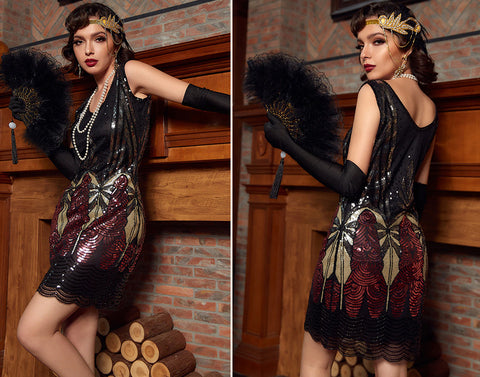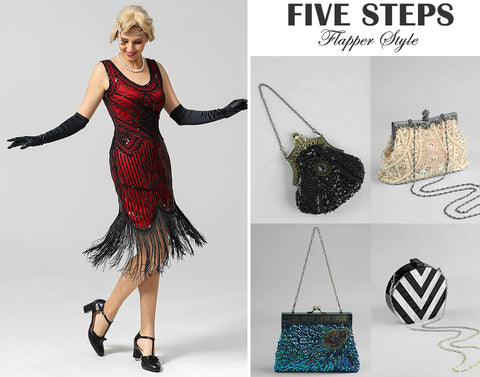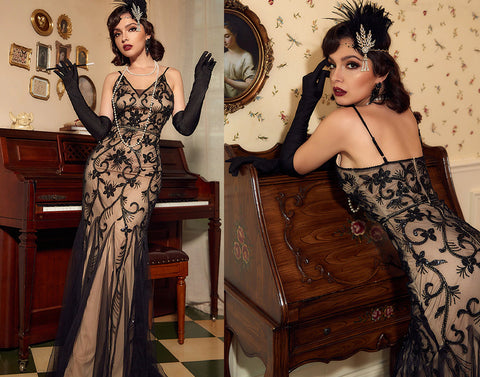Everything You Need to Know About 1920s Evening Gowns
/ Queendancer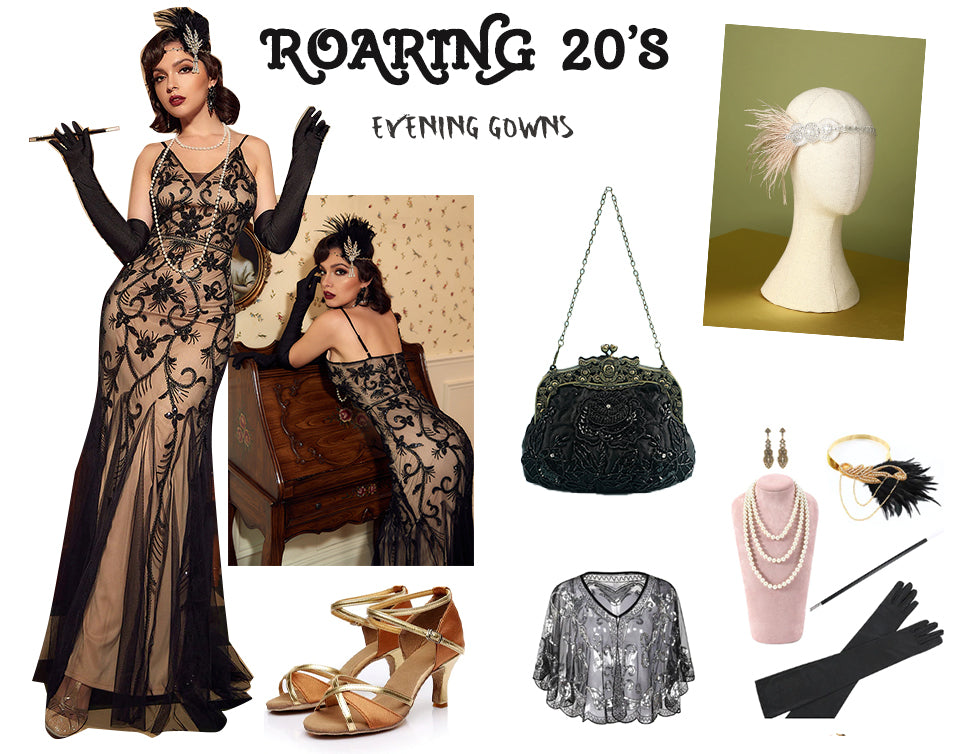
We all know that the 1920s were an iconic era of fashion. One of the most popular fashion items is the evening dress - the dress that women usually wear when they go to a party in the evening. Often crafted with ornate beads, sequins and delicate materials, these dresses were so luxurious that only the wealthy class at the time could afford them.
In The Great Gatsby, released in 2013, it portrayed the flamboyant fashion and dressing styles of the 1920s. Through this movie, you can learn how women wear luxurious dresses and accessories, which are very pleasing to the eye. This article takes you through the Gatsby-themed evening gowns of the 1920s and how they influenced modern fashion.
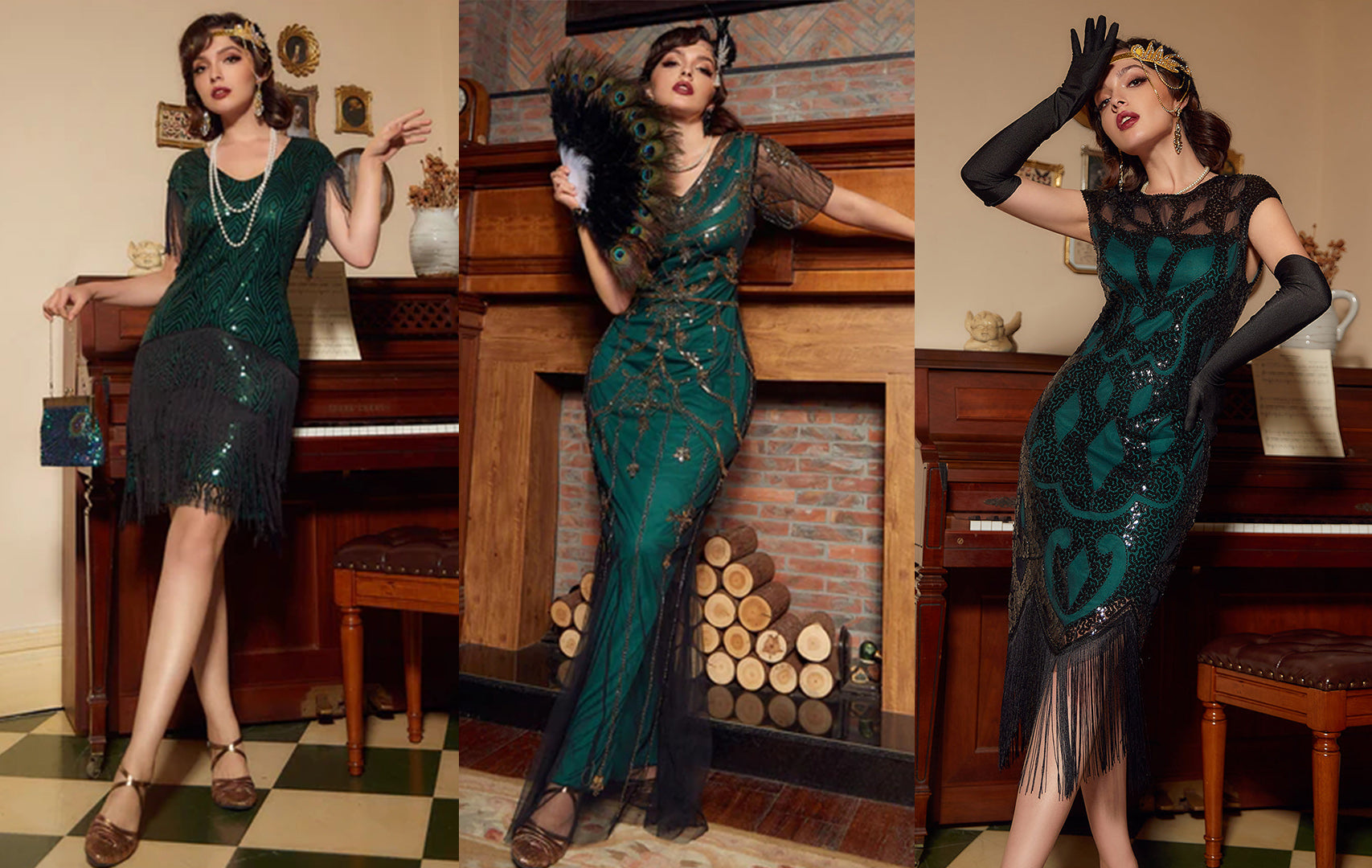
(CGZL221006, YYZL221, AV122)
Evening dresses in the 1920s were very innovative. Combining unique sewing patterns, designs and cuts, these evening gowns completely changed the game in the fashion industry at the time. Most of these dresses are decorated with clusters of crystals and gemstones, in addition, gold and silver embroidery is commonly seen on these dresses. Embroidery is concentrated on the sleeves and main body of the skirt. These distinctive features of evening gowns in the 1920s had an impact on the way people dressed at the time. This characteristic evening dress became more and more popular in the 20s, usually they are made of flowing and rich materials, and the lady who wears it can show her wealth and grace. These high-quality fabrics and delicate decorations make any piece of clothing a work of art.
Bare Evening Dress of 1920S
Bare evening gowns are a popular style in 1920s. This evening dress not only shows off your skin but looks good on any skin tone. This is more popular as a "dance" dress because you can freely move your arms and legs when wearing this dress, allowing you to show off your beautiful body contour and shape. Bare evening gowns are relatively short in length, which is why women wear them to parties. However, the bare dresses also took on a longer form when worn in winter. However, the materials used remain light and ethereal.
The neckline is usually in the shape of a square neckline. While the backs are delicate and cut deeper to reveal the backside, they do not require underwear due to their specific material, cut and style.
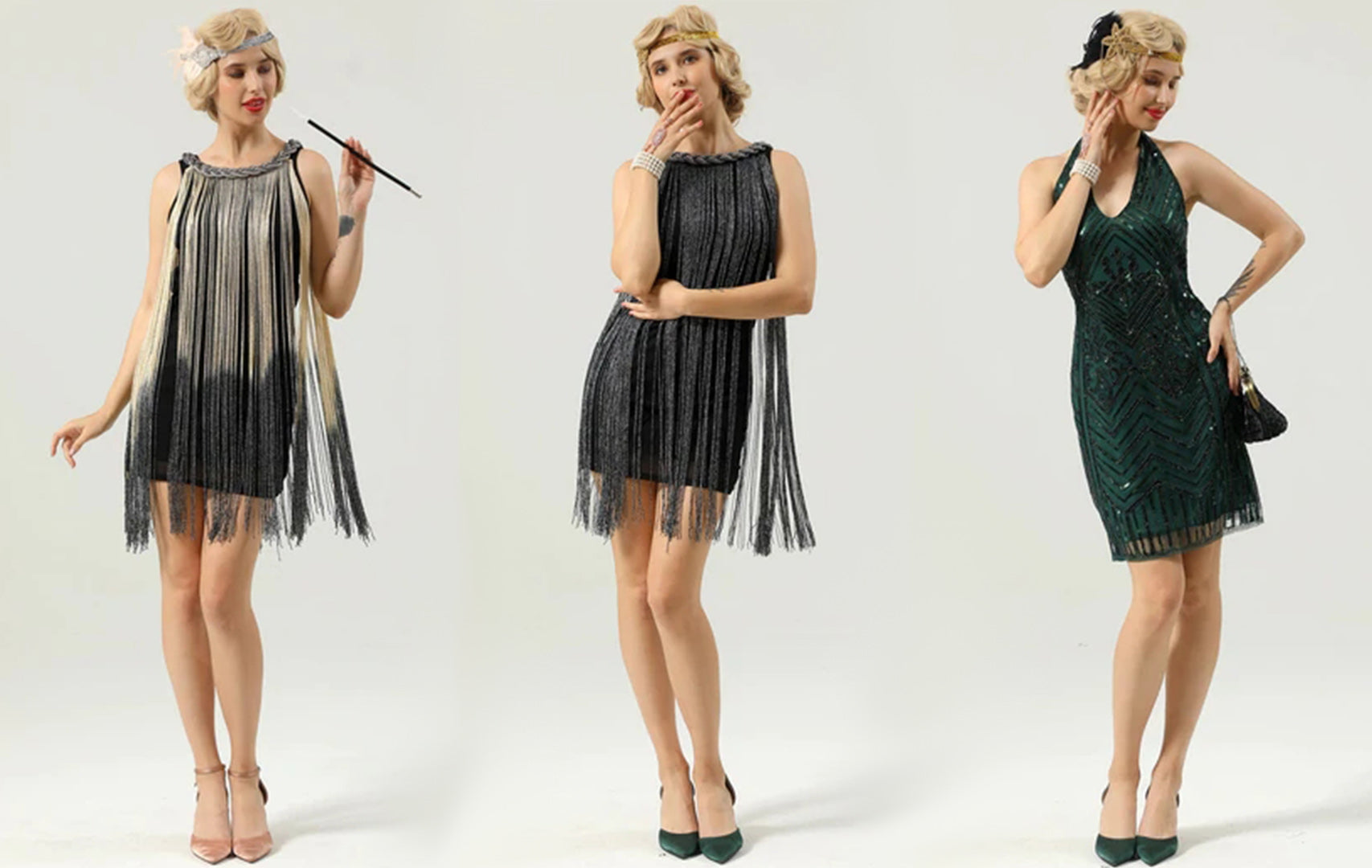
(AV100 Apricot, AV100 Black, AV117 Green)
Many women also pair bare evening gowns with nude or colored stockings, which are relatively sheer but work perfectly with evening gowns. The preferred colors for stockings are pastel peach and apricot.
These evening gowns are often paired with a mesh tote, beaded accessories, and even a jeweled cigarette holder. Still others like to wear chic hair accessories to complement the whole outfit.
Sequin Evening Dress of 1920s
Sequins were a feature of evening gowns in the 1920s. They made the dress heavier and further became a symbol of wealth and majesty for the rich. These sequins often come in swirl shapes, floral patterns and other intricate patterns. Sequins are paired with filigree threads to give these dresses an artistic flair. There are some creative designers who use metallic sequins to decorate dresses.

(CGZL221002, CGZL221003, CGZL221246, YYZL221)
These sequins, better known as "gold sequined spools", have been used on King Tutankhamun's clothing since Egyptian times. If metallic sequins and thread couldn't be afforded, the slightly lower-class women also made their own evening dresses, making skirts out of taffeta and embellished with large silk flowers that looked just as sparkly.
Differnet Styles of 1920s Dresses During the Decade
1920
Flaring dresses are popular this year. The waistline of women's dresses is more defined. Robe de style dresses are more popular. With many designers incorporating elements of this skirt into their designs, this flouncing silouette dress is becoming more and more sought after by women.
1922
The defined waistline trend continued during 1922 and 1923. People love dresses that flatter their figure. However, the clear trend is for evening gowns to be much shorter in length. Short dresses can moderately reveal part of the skin and allow you to dance and move freely. The skirt has a higher neckline instead of the usual low neckline. Boat neck or crew neck is more popular and can be freely matched with various hair accessories.
1924
1924 was the iconic year when Chanel began to break all fashion boundaries. It further shortened the length of dance dresses and makes it a trend. This kind of short skirt allowed women to swing and dance more freely, so women at that time liked to wear this sort of short skirt for parties. These dance dresses are made of lightweight materials but are equally stylish. They were beautifully embellished with gold embroidery, bead and stonework, and crystals.
The materials of choice were chiffon and lace, which were "flowy" and much lighter than satin and velvet. Also, these dance dresses came in soft beige and pastel shades. They were loud colors yet they made the statement.
1925
This year is when the low backless element is revolutionized dresses. It showed off the skin and was perfectly paired with voluminus skirts. The fringe element is also very popular this year. Short skirts with silk fringe elements were widely used as dance dresses, because the fringes sway with the body. This was also the reason why this type of dress was popular among the performers of the time.
1926
While there were no drastic changes in 1926, there were some changes that led the way for the next few years. Beads were also being used more and more. The material of the skirt extends to crepe, lace, satin and taffeta.
1927
Straight dresses with fuller skirts became more popular. This time pastel shades were out! Brighter colors such as blue, lavender, yellow, green, terracotta, and lipstick red could be seen on women. Deep halters were trendy, and women willing to show more of their skin.
1928
The rest of the last few years also bought iconic changes. The handkerchief hem became a trend and it was longer evening dresses that showed some of the legs. Colors also shifted to deeper burgundy, midnight blue and red.
1929
Later in 1929, evening gowns began to have longer sleeves. The rear of the dress even had a longer tail, while the front ended in the middle of the shin. Dresses like this became popular in the 1920s, making them an icon of the era.

